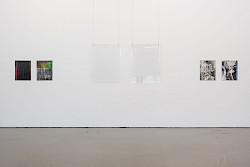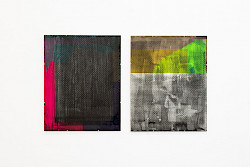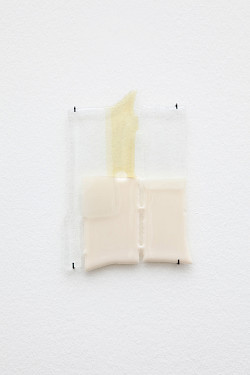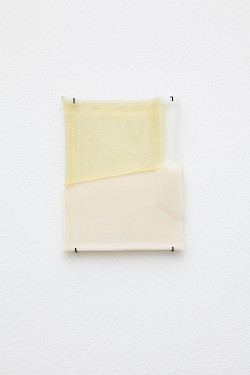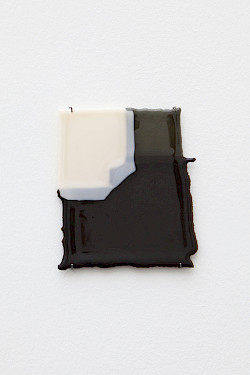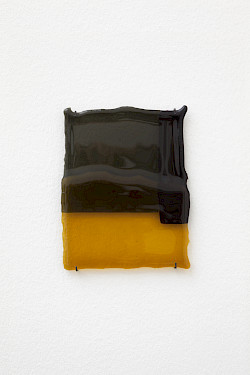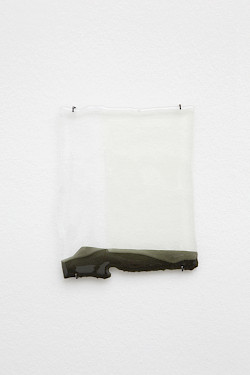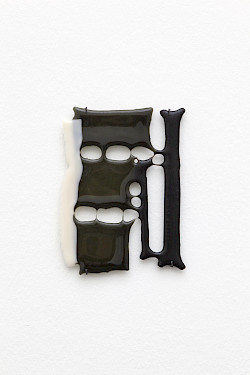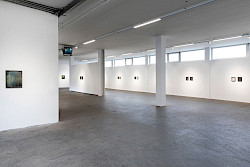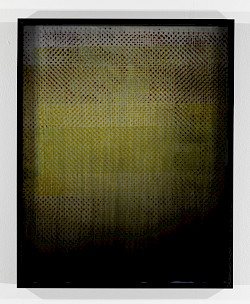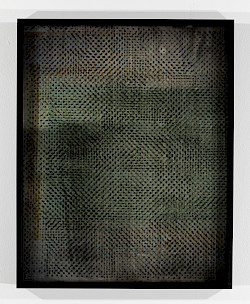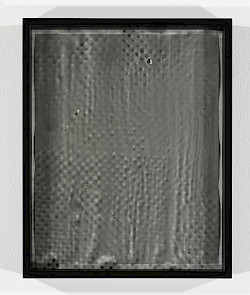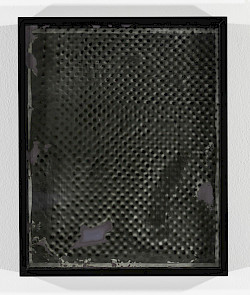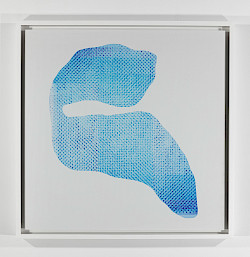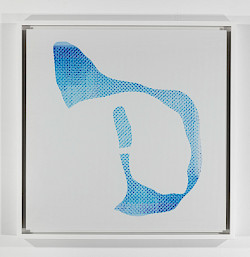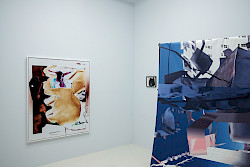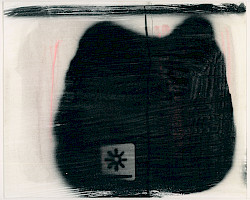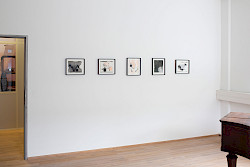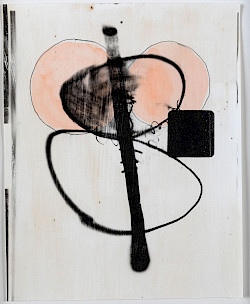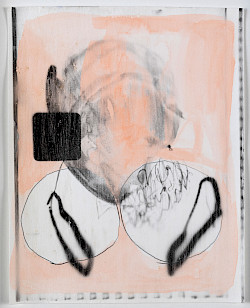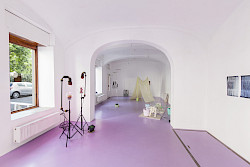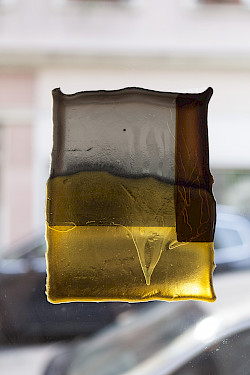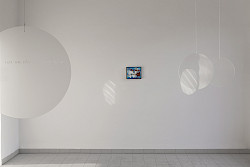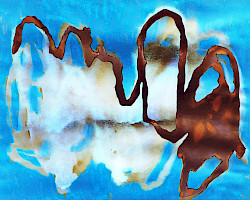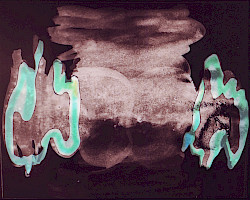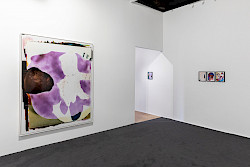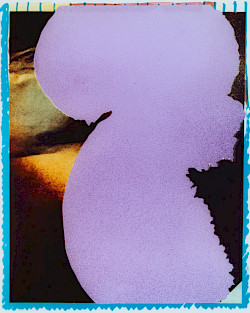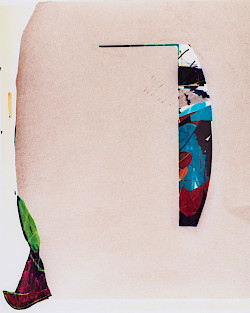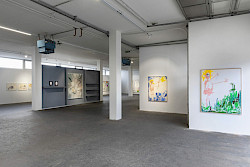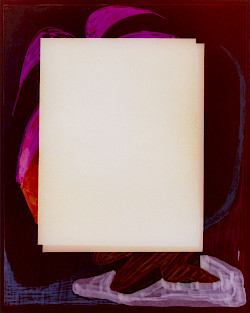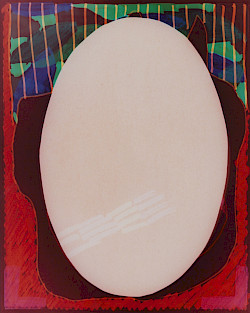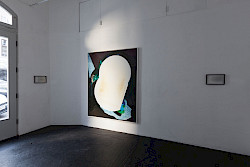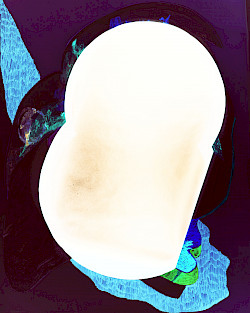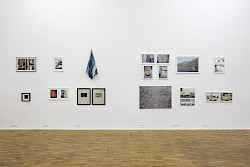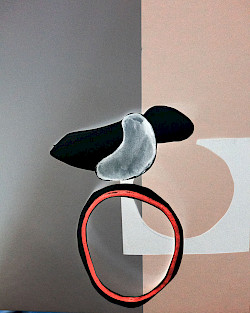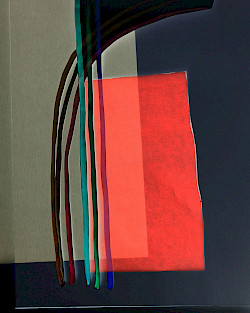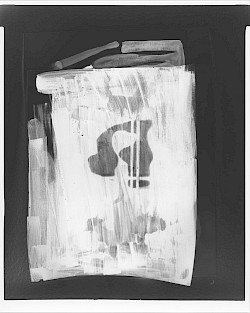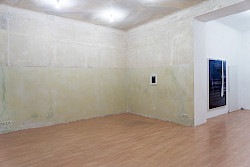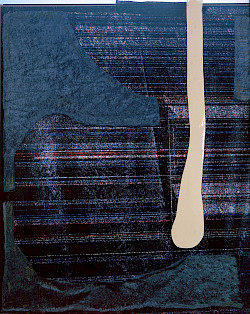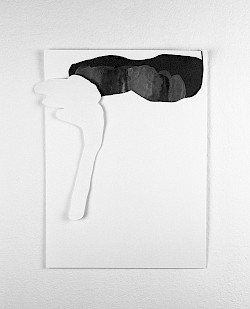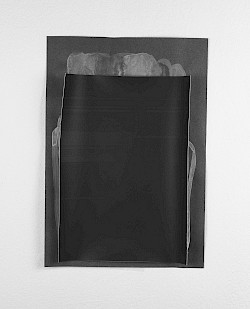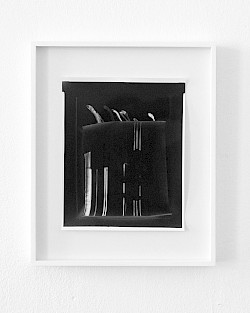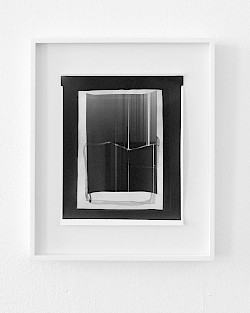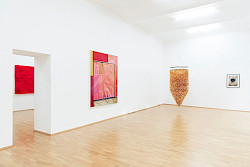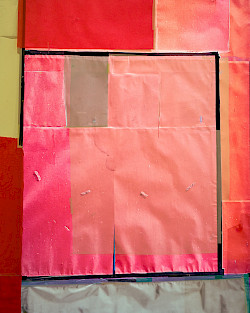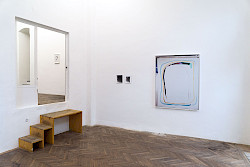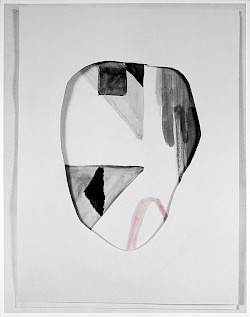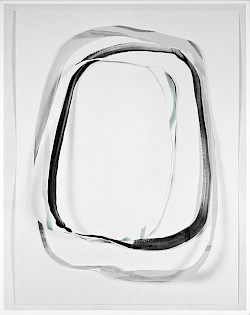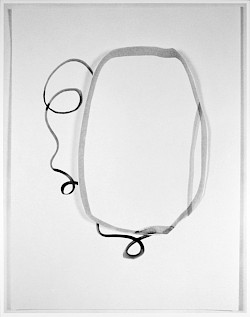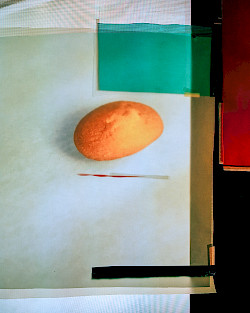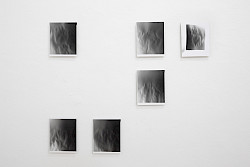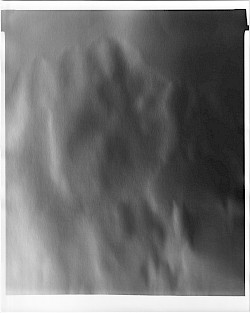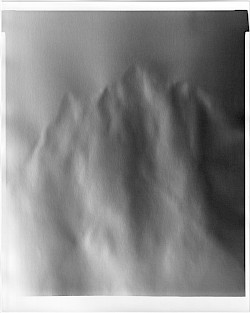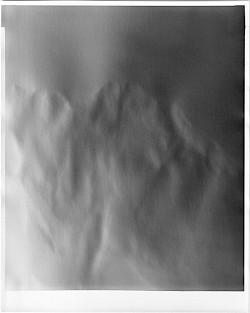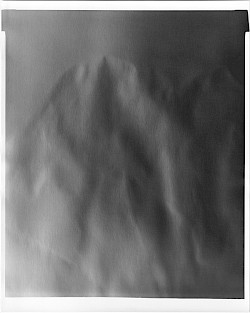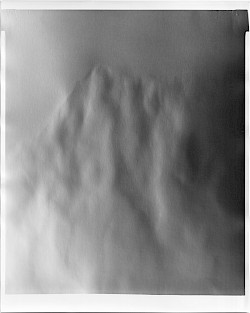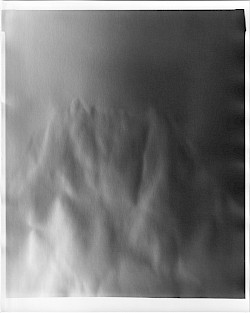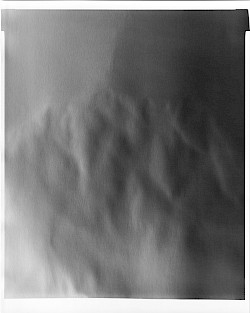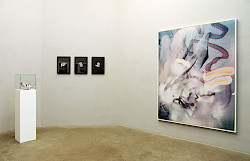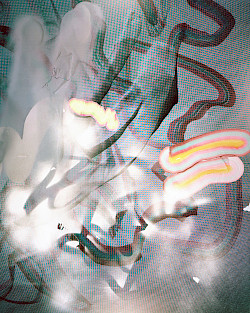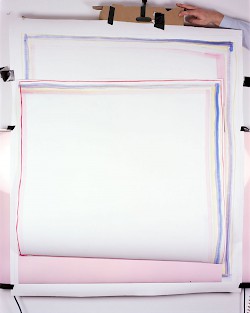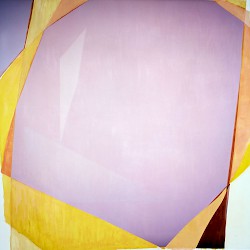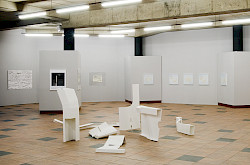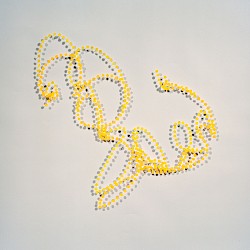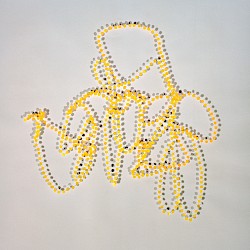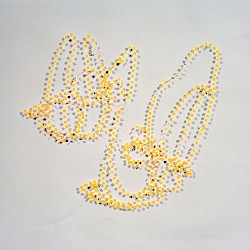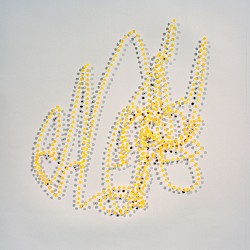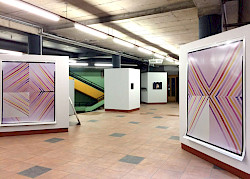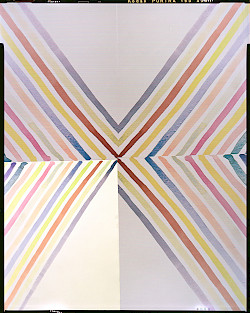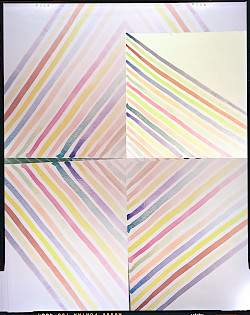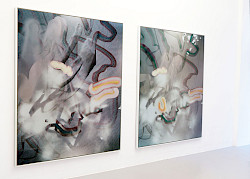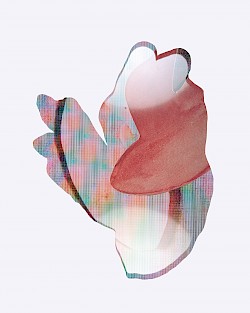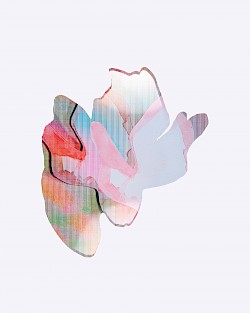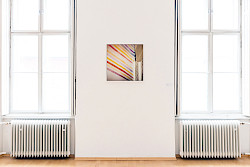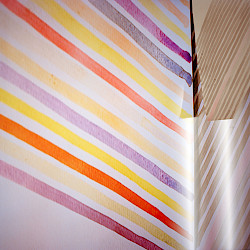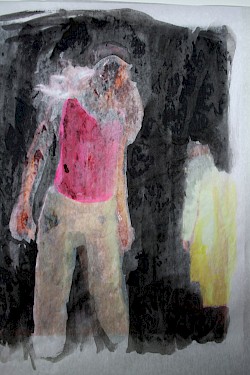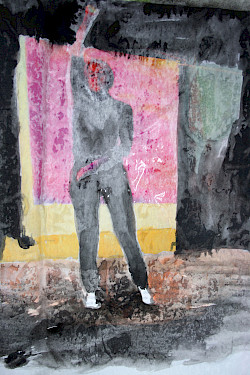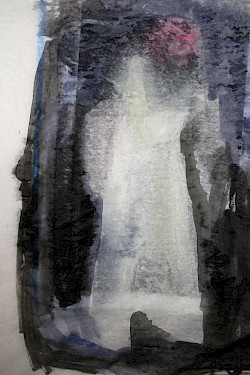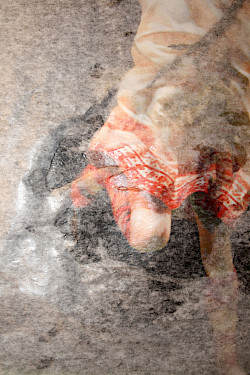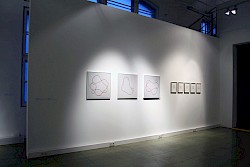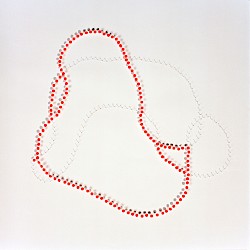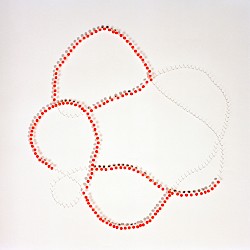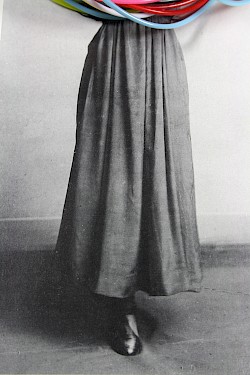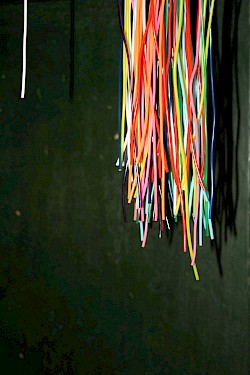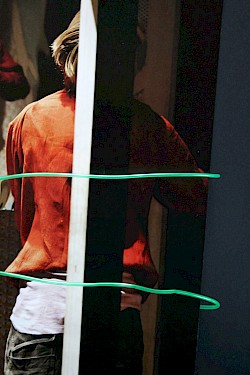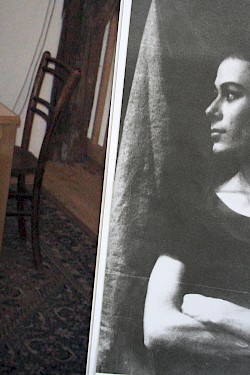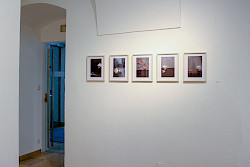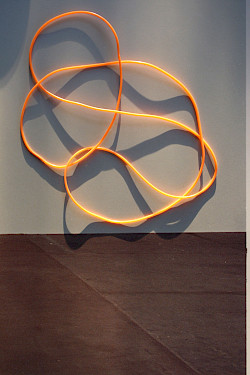Destroying Photography
Camera Austria, Graz 2024/25 and FRISE Künstler:innenhaus, Hamburg 2024
Group Show
With works by
Laurel Chokoago, Elisa Goldammer, Maik Gräf, Almut Hilf, Maximilian Koppernock, Mitko Mitkov, Sophie Pölzl, Claudia Rohrauer, Caspar Sänger, Jenny Schäfer, Janine Schranz, Wiebke Schwarzhans, Dirk Stewen, Daniela Zeilinger and a text by Mira Anneli Naß.
Working with or in photography moves between the poles of technical perfection and the attempt to break away from the line of vision, the rectangle, the material. The destructive characteristics of photography are thus not only of a content-related or formal nature, but the prerequisites of photographic processes are based in many respects on extractive and exploitative practices. The exhibition Destroying Photography, initiated by Maik Gräf and Jenny Schäfer and shown in an earlier version at the Künstler*innenhaus Frise Hamburg in early 2024, brings together artistic works examining the deconstruction of technical processes, the abstraction of photographic material, and new perspectives on object, picture, and position. For Camera Austria, the exhibition has been expanded to include three artists living in Austria—Sophie Pölzl, Claudia Rohrauer, and Janine Schranz—invited to participate by Daniela Zeilinger.
Soft Vanishing Points
Kunstmuseum Luzern, 2024/25
Group Show
In collaboration with Janine Schranz
…windows have always been gateways for our imagination. We look outwards, then turn inwards to dream. …be that from the inside of a remote cabin, within the confines of a high-rise, or the interior of a railway carriage. Time by windows is time well spent.
–Hartley Martin. „Foreword.“ Sidetracked 18 (June 2020)
In the Soft vanishing points series of works, essential questions about photography and space enter into a poetic dialogue. The attempt to depict space on a two-dimensional surface has been a theme in art not only since the Renaissance. The discovery of central perspective, which corresponds to a distortion-free photographic image, is closely linked to the invention of the camera obscura. The sharpness of the photographic image, in turn, is due to the exact refraction of light through a ground glass lens.
Soft vanishing points picks up on themes of perception and the gaze. The individual works, glass plates fused together, are both image and object. They invite the viewer to look through them and offer an altered perception of space that is not focussed on a vanishing point. At the same time, they visually embody an abstracted, central perspective view.
The series of works was created in a collaboration between Janine Schranz and Daniela Zeilinger. In their work, both artists subtly scrutinise the basic conditions of the medium of photography.
-Daniela Zeilinger
Polkadots
Elektrohalle Rhomberg, Salzburg 2024
Solo Show
In Daniela Zeilinger's working method, media and material-reflective processes intertwine to create images that always raise the question of the conditions of their own mode of representation. Experimental work processes and a variety of media transformations are central to her work. Using collage and montage techniques that interweave analogue material and digital images, she creates pictures that reveal themselves as complex layers questioning the preconditions of photographic and painted representation. At thresholds between analog and digital photography as well as painting and drawing, the artist refers in the exhibition „Polkadots" to the simple dot as a starting motif and the highest concentration of formal expression.
- Niklas Koschel
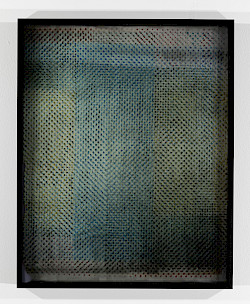
Op Dots #1, 2018/23
Glass coated with photo emulsion, exposed with negative of the series Polkadots,
analogue C-print, hand print
51,5 x 41 x 4 cm
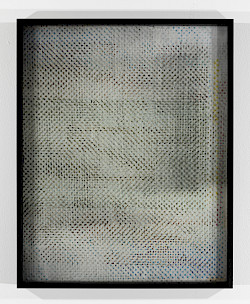
Op Dots #2, 2018/23
Glass coated with photo emulsion, exposed with negative of the series Polkadots,
analogue C-print, hand print
51,5 x 41 x 4 cm
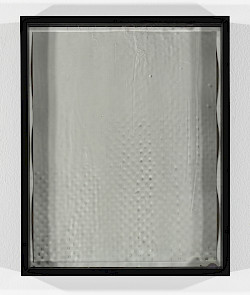
Dot Dots #4, 2023/24
Museum glass coated with photo emulsion, exposed with negative of the Polkadots series,
Photogram on baryta paper
28 x 23 x 4 cm
Unique piece
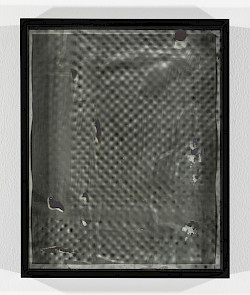
Dot Dots #12, 2023/24
Museum glass coated with photo emulsion, exposed with negative of the Polkadots series,
Photogram on baryta paper
28 x 23 x 4 cm
Unique piece

Dot Koni #1, 2021/23
Museum glass coated with photo emulsion, exposed with negative of the series Polkadots,
watercolour
Unique piece
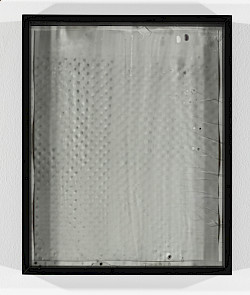
Dot Dots #6, 2023/24
Museum glass coated with photo emulsion, exposed with negative of the Polkadots series,
Photogram on baryta paper
Unique piece
Uncertainity
Sizematters. Space for art and film, Vienna 2023
Duo Show with Kathrin Ganser (DE)
"Uncertainity" is the title of the joint exhibition by Kathrin Ganser and Daniela Zeilinger, in which they open a critical dialogue on the supposed certainties and blurred edges of photography. In their complex and multi-layered works, which are essentially characterised by the use of different visual media and media-reflexive strategies, they put familiar modes of perception to the test. (...) As their artistic practice is characterised by triggering more questions than providing answers on the part of the viewer, Kathrin Ganser and Daniela Zeilinger focus on what one could call the indeterminate in photography.
- Dr. Christina Natlacen
Where is the reality? Where do you have it?
Salon Elektrohalle Rhomberg, Salzburg 2022
Solo Show
In Daniela Zeilinger's photographic experiments, a wide variety of light-dependent techniques merge into hybrid constellations that tell of the existence of multiple realities. The image sparks an investigative gaze in terms of indexicality; an attempt to separate the different levels from one another and to trace them back to actualities. But the image does not disintegrate. Instead, it references the numerous agents and ancillary techniques involved in its creation: the artist's body, the display of a laptop, colorful pigments, the staff of the photo studio, and so on. Some of the elements have been translated from positive to negative and vice versa, therefore implementing several contradictory realities that coexist in a singular image space. Their relations generate a choreography of different materialities and temporalities that refer to the individual durations of the various exposure and editing processes. Like the layers of geological formations, from which we can read the age of rocks, the earth, and time itself, we try to look down into the ground of the photographic works and, loosely following Heinz von Foerster, ask ourselves: where is the one reality? Where are the many realities?
- Sophie Publig
Tombola V
school, Vienna 2022
Group Show
Tombola is an exhibition format initiated by Terese Kasalicky and Heti Prack. Teams of artists are invited to throw their themes and media into the lottery pot, the raffle tickets are drawn. The conditions for the works are determined by Fortuna and the results are exhibited.
Janine Schranz & Daniela Zeilinger
Soft vanishing points
Tombola: Metamorphosis & Imprint
...windows have always been gateways for our imagination.
We look outwards, then turn inwards to dream. ...be that
from the inside of a remote cabin, within the confines of
a high-rise, or the interior of a railway carriage.
Time by windows is time well spent.
(Hartley Martin. „Foreword.“ Sidetracked 18, June 2020)
Blend together
Mz*Baltazar’s Laboratory, Vienna 2022
Duo Show with Janine Schranz (CH)
The exhibition "Blend Together" by Janine Schranz and Daniela Zeilinger, presented at Mz*Baltazar’s Laboratory as part of this year's Foto Wien, follows on thematically from the joint exhibition "Passepartout," on view at hoast in Vienna in 2021. Whereas last year's attention was focused on processes of selecting, cropping and fading out, this time the focus is on situations of transparency and blending. While at hoast the focus was on techniques of inclusion and exclusion within a given architecture or within the image field, the exhibition at Mz*Baltazar’s will examine possibilities of communication between inside and outside, from artwork to artwork, and between real space and image space. [...]
On the occasion of Zeilinger’s contribution to the exhibition Passepartout, on view in 2021 at hoast, I spoke of the uncanny, the eerie, inherent in her pictures. According to Freud, the uncanny is determined by a strangeness in the familiar. In Daniela Zeilinger’s work, the familiar processes of perception are unsettled, alienation effects similar to Brecht’s Verfremdungseffekt are deliberately employed. The individual parts of the picture do not fit together into a coherent whole into which the viewing subject can immerse itself in order to lose and forget itself in it. The uncanniness that haunts the viewer is rooted in the desire to create an intelligible whole to which the subject can relate clearly and thereby constitute itself as such, or at least perform its subjectivity. But perhaps this also explains the fascination with the uncanny, its titillation. With Slavoj Žižek, and following Jacques Lacan, one might say, “The subject’s effort to close the ontological gap retrospectively creates and sustains that gap.”
- Michael Wonnerth-Magnusson
Yonder
Künstlerhaus Salzburg, 2021
Solo Show
In her solo exhibition Yonder, the artist raises poignant questions about photography's relation to reality. Her works, as analogue photographs, are created in a multi-layered process of transformation and translation. They oscillate between image and imagination, and photography and painting. An enigmatic narrative connects the individual pictorial spaces and evokes a place where one can never really be: yonder.
–Seamus Kealy
Drame Surréaliste
Elektrohalle Rhomberg, Salzburg, 2021
Group Show
The title of the exhibition refers to the surrealist play "Les mamelles de Tirésias" by Guillaume Apollinaire from 1903 with the subtitle "Drame surréaliste". With this subtitle and in the foreword to the play, the poet invented the word "surrealism" to describe his new style of drama. In 1924 Breton took over the term as the name for the already existing intellectual movement in literature, art and film. The piece was set to music by Francis Poulenc for Opera Buffa in 1944. The exhibiting artists freely associate with the exhibition title.
–Laura Helena Wurth
Passepartout
hoast, Vienna 2021
Duo Show with Janine Schranz (CH)
Cropping and framing – the selection of visual information into a framed fragment – are among the main tools of photography and film. In the works of Janine Schranz and Daniela Zeilinger, these techniques of framing, so inherent in the dispositifs of film and photography, are transposed to different media, turned on and against themselves, inverted and deconstructed. As an emblem for the multifaceted framing effects they develop in their joint exhibition in hoast, the two artists have chosen a concept closely linked to the history of presentation of the (photographic) images: the passe-partout. [...]
Daniela Zeilinger‘s works regularly play with a kind of abstraction reminiscent of the experimental photography of the historical avant-gardes. Unlike Dadaist photomontage, for instance, however, the aim is not to create a new syntax through the distribution (or spacing) of elements that – being recognizable in themselves – wrest an underlying truth from the appearances of reality. Rather, a sense of disorientation arises in the viewer, in the face of the difficulty (if not impossibility) to grasp the spatial, material and mediatic conditions of Zeilinger’s compositions. Although everything seems to be visible, not everything is shown. The motifs of the pictures, as well as the means and processes employed, remain enigmatic, eluding access and classification.
–Michael Wonnerth-Magnusson
Common Ground
Salzburger Kunstverein, 2020
Group Show
This year to date has been marked by uncertainty and a global crisis. The question of art’s role in times of uncertainty and crisis is more clearly understood when examined in retrospect. However, contemporary art always has a role to play in difficult times. Further exhibitions that emerge out of times of crisis may transmit a sense of togetherness that was, for example, recently wrenched away from us all. This year’s Members Exhibition is entitled Common Ground. Questions of democracy, openness, togetherness, how to live and be together, and how to re-establish close proximity to one another are all aspects of this theme. For the exhibition, a mode of presentation has been designed. Artwork will be presented tightly together in a series of grids. Artworks may indeed even touch each other.
Curator: Séamus Kealy & the team of the Salzburger Kunstverein
Vienna Contemporary
Marx Halle Vienna 2020
Art Fair with gallery Elektrohalle Rhomberg
Mirage, mirage
FOX, Vienna 2019
Solo Show
As a result of natural laws “mirages” elusively appear as fictional reality, akin to the Fata Morgana induced by erratic layers of air of different temperatures, which once led to the legend of the „Flying Dutchman“ – a fertile ground for both artistic production and exaggerated pathos.
Daniela Zeilinger‘s mirages are also doubtlessly challenging the realities of our subjective and creative perception, which they inevitably destabilize. We thus face the dichotomy between the delusional artistic interpretation of these works and their scientific veracity, an inconsistency, which has always been shaping the historically polarized relation of photography and painting. Whereas painting was supposed to be fiction, photographs appeared as documents critically negotiating new forms of representation. Even if today this dichotomy has been largely deconstructed, Zeilinger scrutinizes the thin line between photography as a tool for the visual representation of reality and painting as imaginative work by layering artistic processes on top of each other, as if they were mirages themselves.
–Alexandra-Maria Toth
FEMALE – lives and works in Vienna
Gallery LEEB, Vienna 2029
Group Show
In the large-format work Giacomo (2019), Daniela Zeilinger explores the border areas between photography and painting. Through the use and manipulation of analogue photographic processes, expectations of the respective medium (photography - technical precision, image function / painting - gestural freedom, artistic translation) are revealed and skilfully undermined.
–Veronika Rudorfer
The exhibition "FEMALE - lives and works in Vienna" brings together current works by 13 female artists who live and work in Vienna. The focus here is on a generation of young female artists whose practice is characterized by a profound knowledge of materials, a love of media experimentation and artistic autonomy. The aim of the exhibition is to make a new generation of female artists visible and thus locate them in the field of contemporary discourse.
With works by Alexandra Baumgartner | Ina Aloisia Ebenberger | Lilya Corneli | Birgit Graschopf | Song Jing | Kaja Clara Joo | Zhanina Marinova | Karina Mendreczky | Hanna Schibel | Anna Steinhäusler | Veronika Suschnig | Alexandra Tatar | Daniela Zeilinger
curated by Veronika Rudorfer
real but not actual, ideal but not abstract
New Jörg, Vienna 2019
Solo Show
Photographic image constructions
Daniela Zeilinger's works cannot be adequately categorised in terms of media, even if photography is the active element throughout the entire image-making process and in the end. The artist confronts us with abstract pictorial constructions in which traits of drawing, painting, collage and cut-out overlap with digital processes and analogue photography. In the interplay of these very different techniques, the pictures always refer to their constructive character. They thus seem far closer to the essence of painting than that of photography, because - according to traditional knowledge about both media - painting is iconic, photography indexical.
–Manisha Jothady
Petition
Salzburger Kunstverein, 2020
Group Show
Daniela Zeilinger’s directly exposed paper negatives Alp #1-11 look like an afterimage behind closed eyelids. They display the verso sides of her mountain watercolours, re-creating a conceptual mountain as the model for myriads of possible summits.
–Philippe Batka
pilote : top'o-graph'i-cal
coGalleries, Berlin 2017
Group Show
The exhibition reflects on the artists’ working processes which form the basis for a discussion about spatiality and space: inside, outside, abstract and objective. All here represented artists strictly focus on the exploration of diversities between the subjective, aesthetical cognition of places, areas, spaces and landscapes. But everyone with a signature twist!
Both sectional and multi dimensional, the artists depict spaces that are originally formed by nature or man-made or create completely new ones. The central theme dissolution of space renders a possible new perception outside of a usual view and reveal the (pretended) real behind an object. The object depicted is displayed concretely, idealized or abstracted. A unique media diversity of all works shown and their particular image aesthetics reflect a contemporary contemplation and identification with the artists’ environments.
KATHRIN GANSER | SARAH STRASSMANN | VALENTINA TORRADO | DANIELA ZEILINGER
Promising Paradise | Flamingo nah am Wasserturm
Promising Paradise– Vienna Art Week, 2018
Group Show
During my ArtStart_Studio grant, I developed the Rectangle series of works. Rectangle ties in with the series Screenshot, and focuses in particular on the relationship between abstraction and photography. Here, abstraction is primarily examined for the aspect that John Hilliard has formulated in "Using Photography to exorcise Ghosts” and about which Emma Lewis writes in the "Shape of Light" catalog: "[...] by using strategies of abstraction, the photographer is able to stimulate in the viewer something that also happens when one looks at a drawing or painting [...]: a consciousness of the materials that are used and how the work is made. In other words, abstraction can help us to look not at an image on the photographic surface, but at the whole object itself.”
am / pm
The series am / pm was created during a residency in Paliano / Italy. A piece of paper, a pencil, a piece of cable, time of day, light and shadow, coincidence and drawing are the defining parameters of the composition. A cable falls on a sheet of paper at different times of the day. The resulting shape and its shadow are captured by pins.
Pilote : pilote
SEZ, Berlin 2016
Group Show
Betty Böhm, Selket Chlupka, Cécile Dupaquier, Kathrin Ganser, Theresa Schubert, Sarah Straßmann, Attilio Tono, Valentina Torrado, Daniela Zeilinger
pilote:pilote is pilote’s first pop-up exhibition and its introduction into the Berlin art scene. At first glance, the strong appearing heterogenity of the shown positions opens not only interesting discourses about the arts, but also finds its harmony within the exhibition’s interpretational concept. The media spectrum of the art works shown and the artist’s incongruent approaches of contents visualize the current occupation with the contexts about reality and truth, nature and science. They display latest perceptions and tendencies within contemporary art and let the audience feel them.Daniela Zeilinger (*1976) brings photography and painting in a complex and multimedia dialogue. Located in the artistic field of new media she constructs settings for her photographs by referring to abstract art, especially abstract painting. Zeilinger’s complex work processes include multiple techniques and media, such as analogue large-format camera, watercolor painting, collage and cut out. It is through the large-scale prints sensual effects that they assume an important role in her main work.
Screenshots
LLLLLL, Vienna 2016
Solo Show
The series Screenshot proposes a dialogue between photography and painting. The large size of the photographs creates a direct relation to the viewer and refers to their reference frame of painting.
The images are created in a multilayered process from transformation and translation, using different media like painting, drawing, Cut-Out, collage, a screen and re-photographed material within the working process. The different media are like "collaborators", shaping the workflow with their specific quality, analogous to dancers, who interpret the score of a choreography. Deviations and errors in the translation, become a constructive part of the composition, e.g., moiree effect.
Screenshot
Xhibit, Vienna 2016
Diploma Show
The series Screenshot proposes a dialogue between photography and painting. The large size of the photographs creates a direct relation to the viewer and refers to their reference frame of painting.
The images are created in a multilayered process from transformation and translation, using different media like painting, drawing, Cut-Out, collage, a screen and re-photographed material within the working process. The different media are like "collaborators", shaping the workflow with their specific quality, analogous to dancers, who interpret the score of a choreography. Deviations and errors in the translation, become a constructive part of the composition, e.g., moiree effect.
Going south
Galerie Marenzi, Leibnitz, 2016
Group Show
Works selected from the prestigious annual show the "Rundgang" at the department of Art and Photography in the Academy of fine arts in Vienna, Martin Guttmann Class. The show explores the limits of photography dealing with different praxis of contemporary art like sculpture, video installation, and sound, such as performance and new media. Text by Beba Fink
Artists: Sophie Thun | Sofia Cruz Rocha | Katrin Albrecht | Mathias Swoboda | Beba Fink | Martina Simkovicova | Patrick Schabus | Stefanie Stern | Ernst Miesgang | Johanna Trede | Barbara Hainz | Maximilian Anelli-Monti | Brishty Alam | Inge Wurzer | Daniela Zeilinger | Markus Sigl | Manuel Carreon Lopez | Nora Severios | Zarko Aleksic | Igor Ripak | Olesya Kleymenova | Stefanie Guserl | Anna Broschm | Jelena Misic.
The Very
In the series The Very, the photographic moment, the punctum, is crucial. Pictures from dance magazines serve as a starting point for a painterly revision. As long as the paint is wet, parts of the paper remain transparent. The result is a picture that is only visible for a short time. The photograph resembles this picture, defying its ephemeral state.
Building Blocks from Life
Eyes On, Academy of Fine Arts Vienna 2014
Group Show
Exhibition in the context of the Month of Fotography
Concept: Martin Guttmann, Sonia Leimer
Artists: Students from the studio of Art and Photography at the Academy of fine Arts Vienna
In the series Noli, found footage from dance magazines, snapshots of a choreography, gets alienated and re-photographed. The photographic moment is decisive: The two layers touching create an ephemeral image, which is photographically captured. ‘Untitled Duo’ is about light reflections, part of the picture is hand-coloured.
The focus of this years Eyes On – Month of Photography exhibition of the Art and Photography Studio of the Academy of Fine Arts Vienna is a philosophical question that emerged of the class discussions. We decided to ask ourself wether a new spirit can be defined that supersedes the era of postmodernism period. We would like to reflect critically on various themes that define the postmodern thinking namely politics of identity, post colonialism, environmentalism and cultural critic by means of deconstruction. As usual the exhibition will feature work that include apart of the photographic aspect, sculptural or installation elements.
Invariant Variation
Hilger BROTkunsthalle, Wien, 2014
Presentatioin of award winners Ö1 Talent Scholarship 2014
Invariant Variation examines the idea of variation based on a specific object: a knot. The title refers to the fact that, to some extent, variations change the appearance but not the underlying quality of an object. Mathematically, a knot is the embedding of a circle in three-dimensional space, including its continuous deformation. Each knot can be represented in different ways, no diagram is unique. The knot theory therefore deals with descriptions representing the same knot. Knot invariants are used in mathematics to distinguish knots.
In the series Invariant Variation, knots are viewed from different perspectives and reduced to their drawing. Points become lines, their shadows allude to a spatiality.
–Daniela Zeilinger
trio a
Hilger BROTkunsthalle, Wien, 2014
Presentatioin of award winners Ö1 Talentestipendium 2014
trio a continues the series reformulation both formally and in terms of content. In trio a #2, for example, colored plastic strings as three-dimensional lines define a space that becomes a picturesque-looking surface in photography. In their materiality and colourfulness, they contrast the background.
reformulation
Hilger BROTkunsthalle, Wien, 2014
Präsentation der Preisträgerinnen des Ö1 Talentestipendium 2014
With the reformulation of material, a method of choreographic processes is transferred to the work with photography in order to reinterpret found footage from photographic documentations of dance performances.
In reformulation #2 the gaze of dancer and choreographer Yvonne Rainer points into a distant, imaginary place and thus expands the photographic surface into space. reformulation #3 is the collage of a photograph from 1908 with a private photograph. The stripes relate to the might materiality of the costume of the dancer Grete Wiesenthal and transform the pictured photography into an object.
–Daniela Zeilinger
